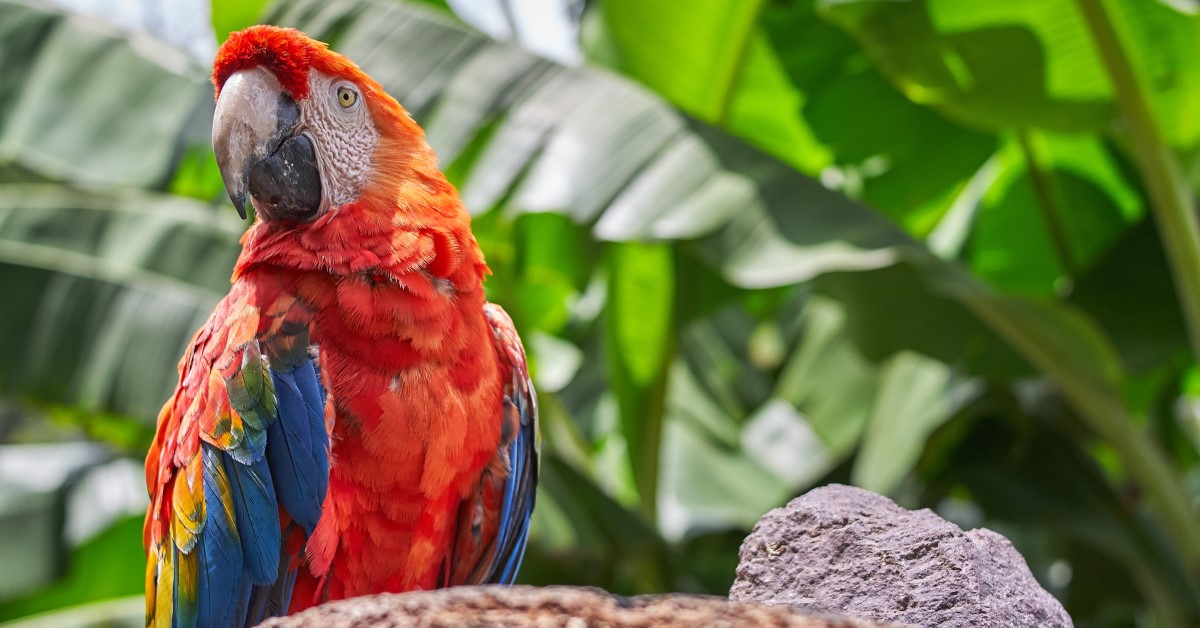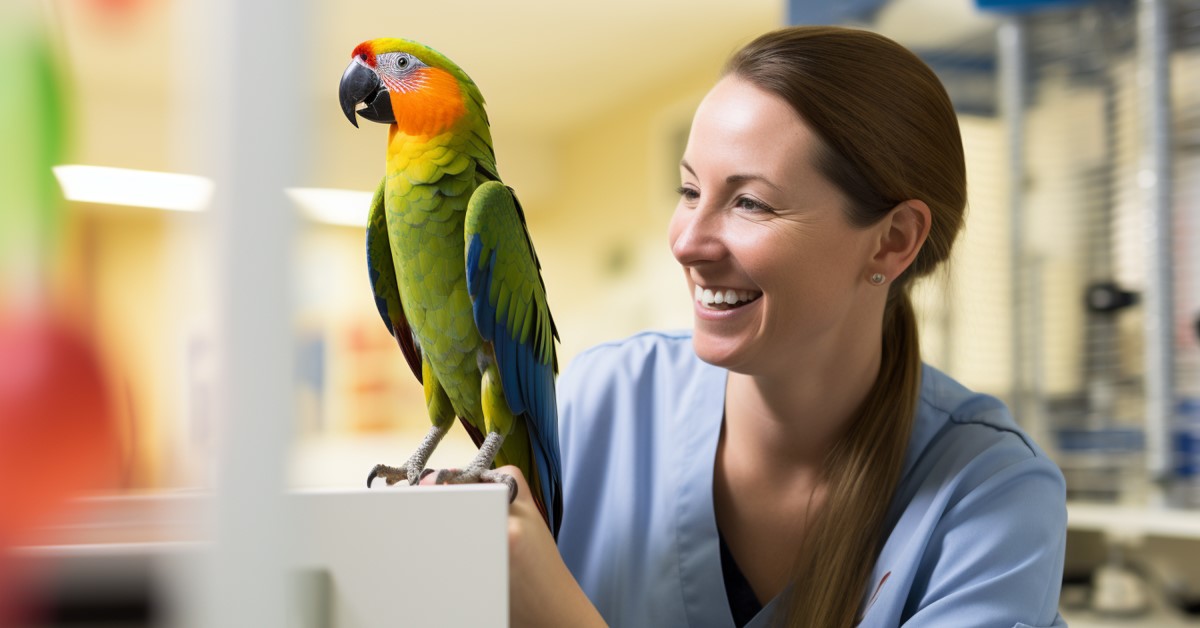10 Things You Didn’t Know About Parrots
Parrots are highly unique in the way that they look, behave, and interact with humans, making them fascinating pets to own.

Parrots are highly intelligent and very entertaining creatures that make incredible pets. There are more than 372 known species of parrots in the world, with the majority residing in tropical areas.
These fascinating birds are known for their clawed feet, strong legs, and curved bills. Many are brightly colored with the most common hues being green, red, cyan, blue, and gray. Parrots are also known for their unique ability to imitate human voices.
Of course, there are many other interesting facts about this popular pet bird. Here are some things that you probably didn’t know about parrots:
1. Parrots Have a Remarkably Long Lifespan
Compared to similarly sized birds and mammals, parrots have a surprisingly long lifespan. Most parrot species have an average lifespan of 30 years; however, some species can live up to 80 years or more. According to a research article published by The Royal Society, there is a correlation between the size of a parrot’s brain and how long it lives. The larger the brain, the longer the parrot is likely to live, as a larger brain makes these birds more adaptable to their environment.
2. Parrots Eat with their Feet
When most people think about how birds eat, they envision a parrot picking up food with its beak. However, parrots actually use their feet to eat. Parrots have extremely strong legs and feet that they use to grasp and hold food up to their beak while they eat. The way that parrots eat with their feet is similar to how humans eat with their fingers.
3. Parrots are One of Few Animals that Can Mimic Human Speech
There are just a few types of animals on the planet capable of talking. Certain types of birds can imitate human speech, such as crows, mynah birds, and ravens. However, parrots are the best at producing clear human words. There have also been several other animals that have learned to say words similar to humans, including an Asian elephant called Koshik, a beluga whale named “NOC,” and a habour seal named Hoover.
4. Parrots are Considered Omnivorous Birds
Parrots are omnivores and have a very broad diet that consists of various types of fruits, nuts, seeds, meat, and insects. They also consume plant-based foods, including leafy vegetation and vegetables.
5. Parrots Tend to Stay with a Single Mate
Parrots are capable of forming loving relationships with one another, similar to humans. When a female and male parrot form a special bond, they tend to stay together for life, even outside of breeding seasons. There are a few circumstances in which a bonded pair of parrots may separate, including if they fail to produce young or if one partner dies.
6. Parrots Can Weigh Up to Seven Pounds
While many species of birds are small and delicate, parrots can range in size. For example, the Kakapo parrot is a nocturnal, flightless bird that can weigh up to 7 pounds, making it the heaviest species of parrot. In addition to being the heaviest, the Kakapo is also the rarest type of parrot with only 126 known to be living in the world.
7. Parrots Have Extremely Strong Beaks
Parrots rely on their beaks for a wide range of functions, such as breaking food into pieces and exploring their surroundings. They also use their beaks to groom, vocalize, play, climb, care for their young, and even as a part of mating rituals. Some of the largest parrots have beaks that are so strong that they can crush the hard shell of a Brazil nut.
8. The Smallest Parrot in the World is Three Inches Long
While most people think that parrots are large in size, not all species of parrots are big. The smallest species of parrot is just three inches long. Known as Pygmy parrots, these small, fast, and agile birds originate from New Guinea and the surrounding Pacific islands where they forage for food in the foliage and thick brush.
9. Parrots Lay an Average of Two to Eight Eggs at Once
A parrot will lay an average of two to eight eggs at one time. Parrot eggs have an incubation period of between 18 and 30 days, during which time both the male and female parents will take turns sitting on the eggs. Once the eggs hatch, the baby parrots will not begin to develop feathers until they are around three weeks old.
10. A Group of Parrots is Called a Pandemonium
The term pandemonium translates to “wild and noisy,” making it a suitable name for a group of parrots. Groups of parrots are often chaotic, noisy, and manic, especially when they’re young. A group of parrots may also be referred to as a flock, which is a more conventional term. They may also be called a company, which refers to a colorful group of parrots that resemble a military parade.
If you are considering getting a parrot for a pet, you’ll find that these creatures are very fascinating. Their high level of intelligence, entertaining behaviors, and ability to be trained make them popular but high-maintenance pets. Parrots tend to need a lot of attention from their humans and cannot be left alone for too long. However, if you have the time and energy to devote to these amazing animals, they can make incredible pets.
Ready to start saving money on pet wellness care?
Then take a look at Mint Wellness, the pet wellness plan that provides fast reimbursement on routine pet care. Save on vaccinations, wellness exams, preventatives, dental, and more!
Learn More


